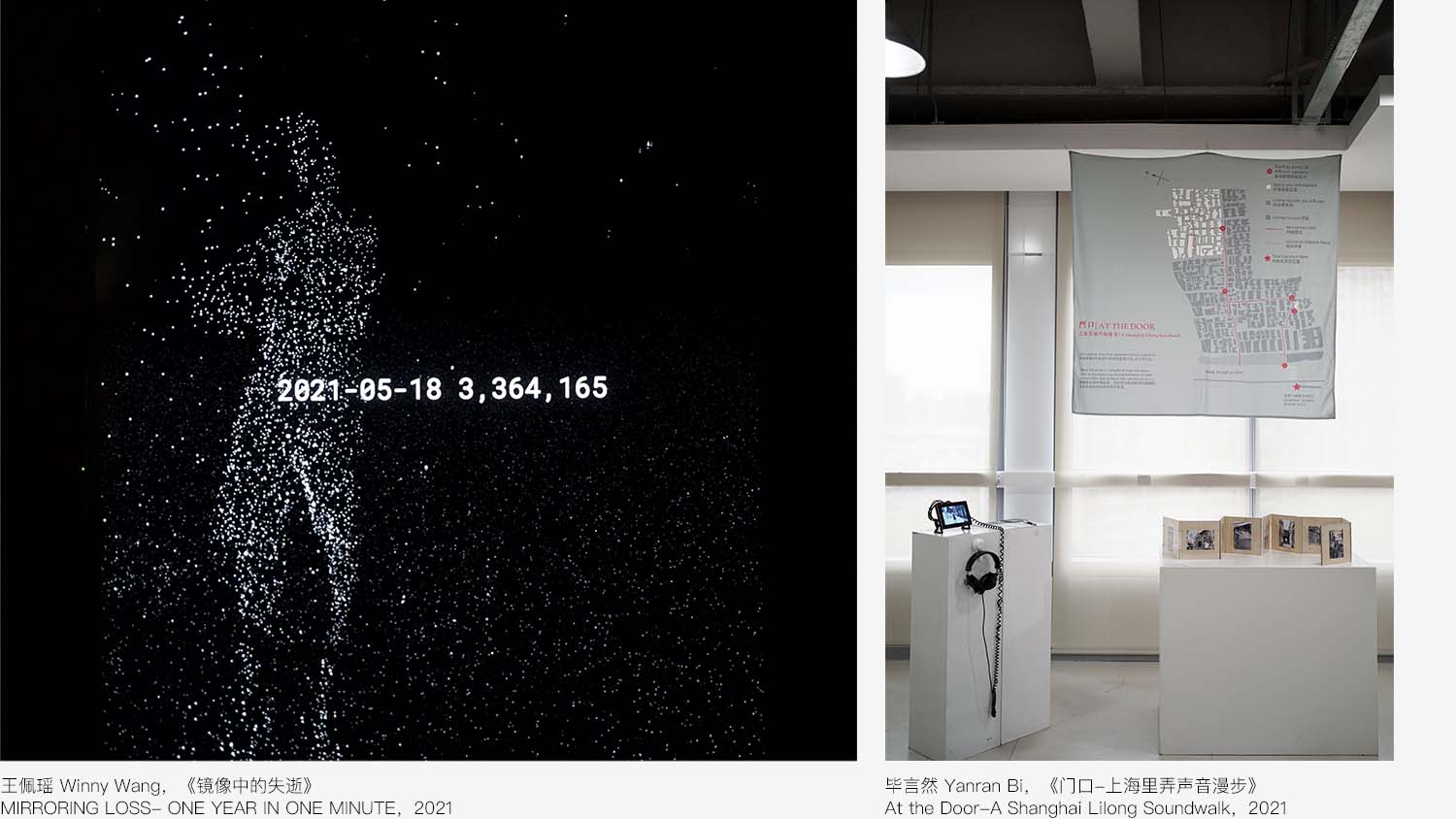“What’s Next?”
“What’s Next?”
随着人工智能技术在日常生活中的不断推进,一个机械与人类共存的未来景观迅速在我们面前展开。现如今不再受限于科幻领域的我们,到底想创造怎样的新现实呢?反乌托邦的,乌托邦的,仁慈的,抑或一系列富于可能的世界?人类、机器、算法、社会和技术之间的界限愈渐模糊,在这样的新现实之下,我们必须思考 — 我们在扮演何种角色?主观性和责任感在当今的算法社会中要如何被定位? 虚实之间是否还存在共同之处? 这个展览汇集了上海纽约大学互动媒体艺术项目来自世界各地的年轻新兴艺术家们。他们的作品中应 用了广泛的媒体技术,人体和机器之间日益紧张的态势得以展现,同时引发我们思考:下一步是什么? 当我们将增强现实技术融入到互动学习环境时,教育的下一步是什么?当我们最大的器官和皮肤被发展出后人类的功能时,人类生物学的下一步是什么?当艺术中的真与假、独创与效仿等问题被应用于机器学习时,创作的下一步是什么?当机器人雕塑开始与人交流时,社交互动的下一步是什么?当我们在虚拟舞池中起舞,周围的虚拟形象在同我们一起享受虚拟乐趣时娱乐的下一步是什么?当我们的身体能 够超现实地将COVID-19数据可视化,并引出关于意义、联系与分离的问题时公,共健康的下一步是什么?当我们在声音的引导下走过一个正在消失的街区、记录它的消亡时城市景观的下一步是什么?当我们尝试用新的社会和集体方式进入和体验虚拟现实时,新媒体的下一步是什么?最后的最后,当我们有足够的勇气问出“下一步是什么”这个艰难的问题时,我们作为人类,又意味着什么?
With the continued advancement of AI-powered technology in our daily lives, a cyborgian future landscape rapidly opens up ahead of us. Once limited to the realm of sci-fi, we must ask ourselves now what kind of new reality we are creating. Will it be dystopian, utopian, benevolent or a spectrum of possible worlds? As the boundaries between humans, machines, algorithms, society, and technology become increasingly blurred, we are confronted with a new reality in which we have to question what role we play. Where do agency and responsibility reside within an algorithmic society? Is there still a common ground for what is considered real or unreal? With these issues in mind, we ask you to consider: “What’s Next?” This exhibition brings together an international selection of young and emerging artists from the Interactive Media Arts program at NYU Shanghai. Using a broad range of media technologies, these artists’ projects confront us with the rising tension between the human body and the machine and invite us to wonder: “What’s Next?” “What’s Next?” for education when we incorporate augmented reality into interactive learning environments. “What’s Next?” for human biology when our largest organ, the skin, evolves into post-human functions. “What’s Next?” for authorship when the question of real or fake, original or copy, in art, gets applied to machine learning. “What’s Next?” for social interaction when robotic sculptures start communicating with people. “What’s Next?” for entertainment after we party on a virtual dance floor surrounded by virtual people enjoying virtual fun. “What’s Next?” for public health as our bodies surreally visualize COVID-19 data, raising questions about meaningfulness, connectedness, and separation. “What’s Next?” for the cityscape when we walk through a disappearing neighborhood, guided by audio, documenting its demise. “What’s Next?” for new media as we experiment with new social and collective ways to enter and experience virtual reality. “What’s Next?” for humanity when we are brave enough to ask the tough question, what does it mean to be human?
上海纽约大学-交互媒体艺术
NYU Shanghai - Interactive Media Arts
上海纽约大学成立于2012年,在上海市及浦东新区政府大力支持下,由华东师范大学和纽约大学合作创 办,是中国第一所中美合办的研究型大学,也是纽约大学全球教育体系中第三所具有学位授予资格的独 立门户校园。上海纽约大学旨在通过创新型教学模式、世界一流的科研环境、以及对公共服务事业的热 忱,培养学生成为具有国际视野的世界公民。 上海纽约大学现有在校本科生和研究生2000余人,中国学生和国际学生各占一半,国际学生来自世界7 多个国家和地区。上海纽约大学的教职工团体由诸多著名学者、创新者、教育家组成,他们均在世界各顶 级研究型大学有丰富的教学及研究经历。 交互媒体艺术专业鼓励学生探索新兴媒体和传播形式带来的的表达可能性。学生面临将实践与理论相结 合,将技能与历史知识、文化理解和概念性思维相结合的挑战。专业领域包括软件开发、数字媒体处 理、实物制造、电子设备开发、物理和虚拟空间构建、媒体理论、交互式装置以及技术的理论延伸等。 在科技日益发展的今天,新兴技术的应用在我们的生活中愈显重要。该专业的课程设置、社群氛围和积 极的学习环境鼓励学生探索个人研究兴趣,有助于学生深入理解概念、掌握实用技能,并批判性地、创 性地使用新技术。
NYU Shanghai is China’s first Sino-US research university and the third degree-granting campus of the NYU Global Network. It was founded in 2012 by New York University and East China Normal University with the support of the city of Shanghai and the district of Pudong. NYU Shanghai seeks to cultivate globally-minded graduates through innovative teaching, world-class research, and a commitment to public service. Our student body currently consists of nearly 2,000 undergraduate and graduate students, half of whom are from China. Students from the United States and some 70 other countries represent the other half. Our faculty of renowned scholars, innovators, and educators are recruited from the world’s best research universities. Interactive Media Arts (IMA) encourages students to explore the expressive possibilities of emerging media. Our students are challenged to combine practice and theory, connecting technical skills with historical knowledge, cultural understanding, and conceptual thinking. Areas of expertise include the development of software, the manipulation of digital media, the fabrication of material objects, the production of electronic devices, the construction of virtual and physical spaces, media theory, interactive installations, and the philosophy of technology. Our curriculum, community, and active learning environment facilitate student acquisition of both conceptual insights and practical skills, encouraging our students to explore their personal interests whilst engaging both critically and creatively with new technologies, which play an increasingly important role in our lives.
